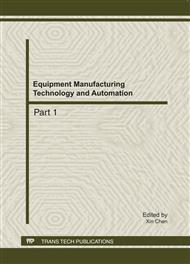p.1041
p.1045
p.1050
p.1058
p.1062
p.1068
p.1074
p.1078
p.1084
Study on Sine-Wave Driving Circuits for EMCCD and its Electron Multiplication Gain
Abstract:
A sine wave with high frequency and high voltage is a key driving signal for EMCCD to realize electron multiplication. According to signal requirements, DDS technique based on FPGA is employed and then sine-formed code-stream is converted to low-voltage sine wave by a digital/analog device. Afterwards, filtering and high-voltage amplification are used to acquire the sine wave with high frequency and high voltage. For the high-voltage amplification, the transfer function of the circuit system is used to correct the circuit parameters, and at last linear amplified sine wave signal with the functions of phase adjusting and amplitude controlling is obtained. By using the sine-wave to drive the EMCCD, low light level imaging is well acquired by the camera and the relationship between sine-wave amplitude and multiplication gain is tested.
Info:
Periodical:
Pages:
1062-1067
Citation:
Online since:
August 2011
Authors:
Price:
Сopyright:
© 2011 Trans Tech Publications Ltd. All Rights Reserved
Share:
Citation:


